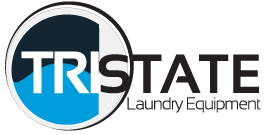Over the last several years, we’ve shared with you why we like purchasing good quality used dry cleaning and
laundry equipment over brand new. Replacing your old, worn out boiler with a good quality used boiler is also an effective and efficient way to spend your resources. There are typically two types of boilers that dry cleaners use – Vertical Tubeless Boilers and Watertube Boilers. Before you start shopping for a used boiler, we’ve come up with a list of tips to help you with your due diligence.
Check the following on Vertical Tubeless Boilers:
1. Was it chemically treated, and if so, do you have the routine water analysis reports? If not, a trusted boiler technician can do an internal inspection and determine the current condition.
2. What was its inspection, maintenance routine, and daily blow down regiment? Proper boiler maintenance ensures it runs efficiently, keeps utility costs down, and most importantly – increases the life of the boiler. Signs of improper chemical treatment and consistent blow down include pitting of the water jacket and scale build up.
3. Are there any leaks? Leaks allow steam to eat away at the metal. Specifically check for leaks between the boiler sections, hand-hole gaskets, and piping.
4. Have the flues been properly maintained? This is an area that is rarely checked or properly maintained but is still important as it significantly impacts the boilers performance and its ability to expel flue gas and build steam pressure efficiently.
5. Are the controls in working order? While the condition of the controls is important, it’s not critical as they are easily replaced.
Check the following on Watertube Boilers:
Determining whether a used Watertube Boiler meets the necessary criteria is a bit easier than for Vertical Tubeless Boilers. First, start with investigating its chemical treatment, the water analysis reports, inspections, maintenance, and blow down regiment. Next, do an internal tube and steam drum inspection to see if there is any pitting or scale buildup within the tubes and steam drum.
On a side note,
Tri-State Laundry Equipment likes Watertube Boilers for dry cleaning operations because of their fast start up time and ability to start and stop each day. You also won’t have the flues to contend with if it’s an atmospheric tube type like with Parker Boiler’s Watertube Boiler. If that is the case, then inspection, cleaning of each cast iron burner, and cleaning its gas orifice makes the burner system like new again. But keep in mind that all other brands of Watertube Boilers that are not atmospheric will require the same attention as the Tubeless Boiler in respect to the flue system.
If you are in the market for a used boiler and have questions, please feel free to call our office at 866-885-5218. We are happy to help.







